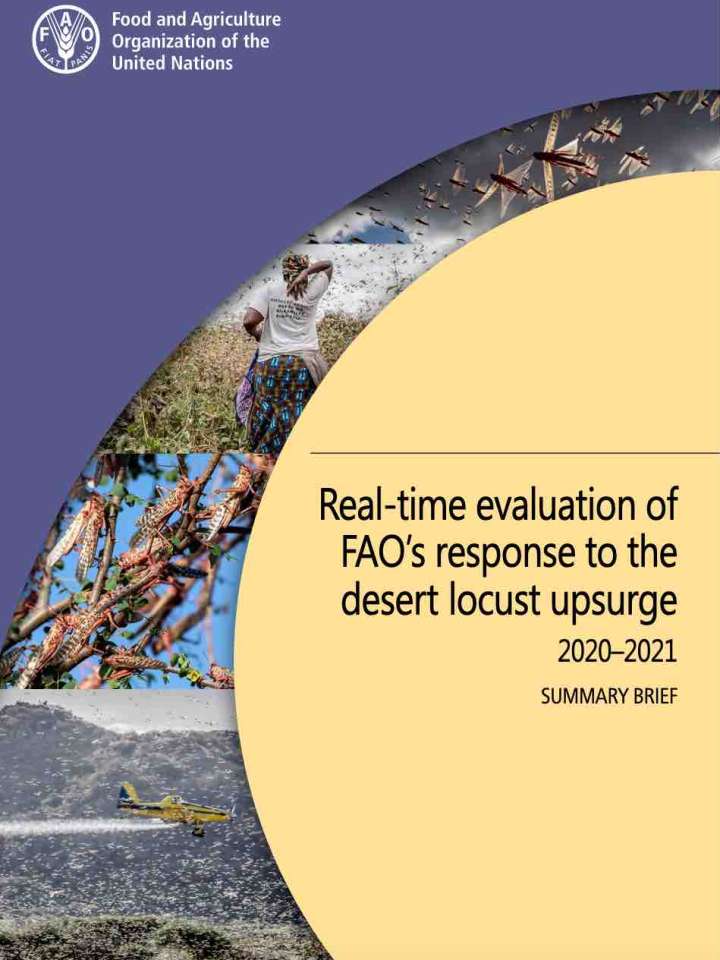Real-time evaluation of FAO's response to the desert locust upsurge 2020–2021
FAO's Office of Evaluation conducted a real time evaluation across three phases spread over one year. Each phase covered specific aspects of the response:
- Phase I focused on leadership, management and coordination of the response and was conducted between June to October 2020.
- Phase II focused on results as well as management and operations at country level.
- Phase III drew lessons for future operations and FAO’s work on Desert Locust in the Region.
Due to extraordinary weather in 2018, Desert Locusts increased rapidly in 2019 and spread from the Near East to Southwest Asia and the Greater Horn of Africa, causing a Desert Locust upsurge to develop in early 2020 - the most devastating in the past 25 years. The upsurge posed an unprecedented risk to livelihoods and food security in some of the most food insecure countries in the world.
The response included three key pillars:
- surveillance and curbing the spread of Desert Locust
- safeguarding livelihoods and promoting recovery
- coordination and preparedness of the rapid surge support
FAO and its partners mobilized more than USD 230 million that allowed ground and aerial operations to treat 2.3 million ha in the Horn of Africa and Yemen in 2020 and 2021. Up to 20 aircraft were deployed simultaneously, supported by hundreds of ground teams, and more than 1.4 million locations were surveyed. These collective efforts averted 4.5 million MT of crop losses, saved 900 million litres of milk production, and secured food for nearly 42 million people. The commercial value of the cereal and milk loss averted is estimated at USD 1.77 billion.
